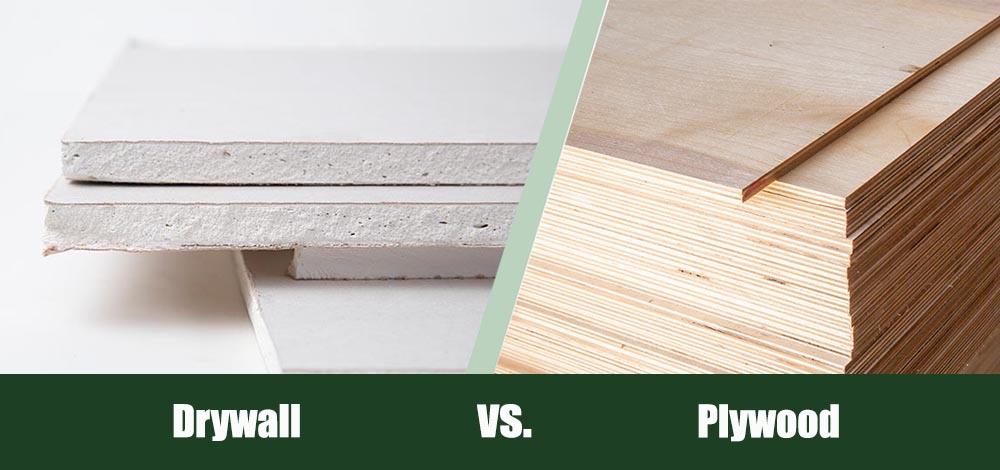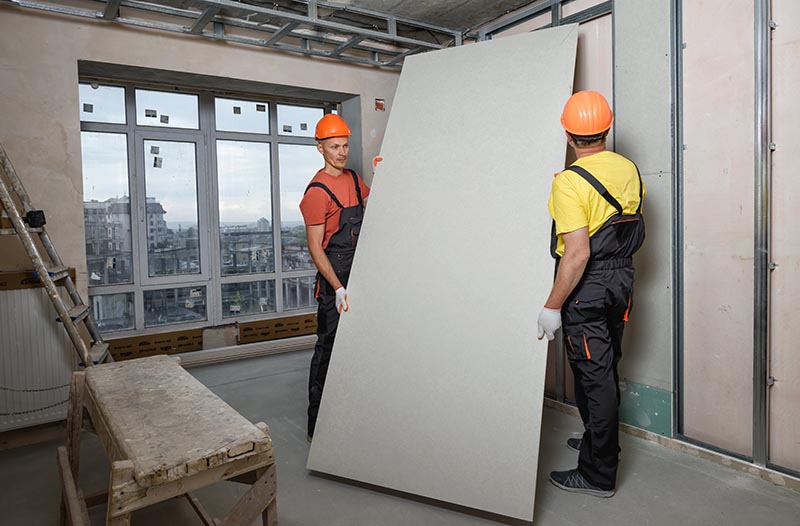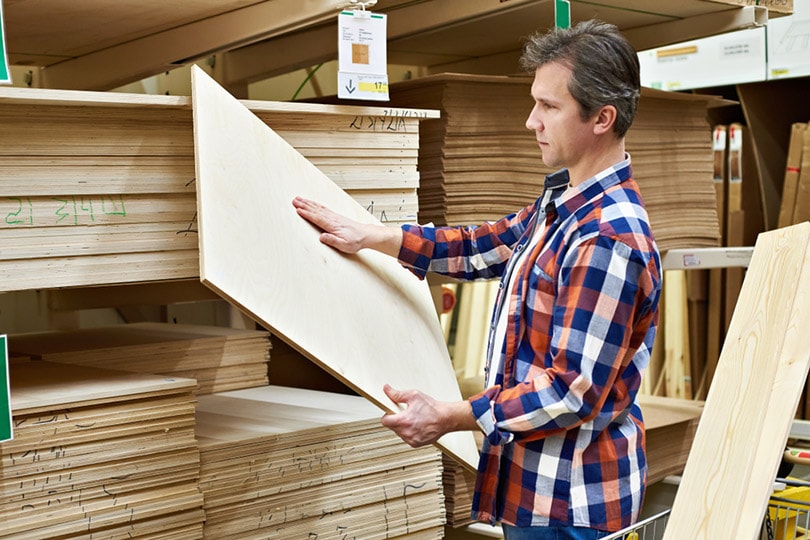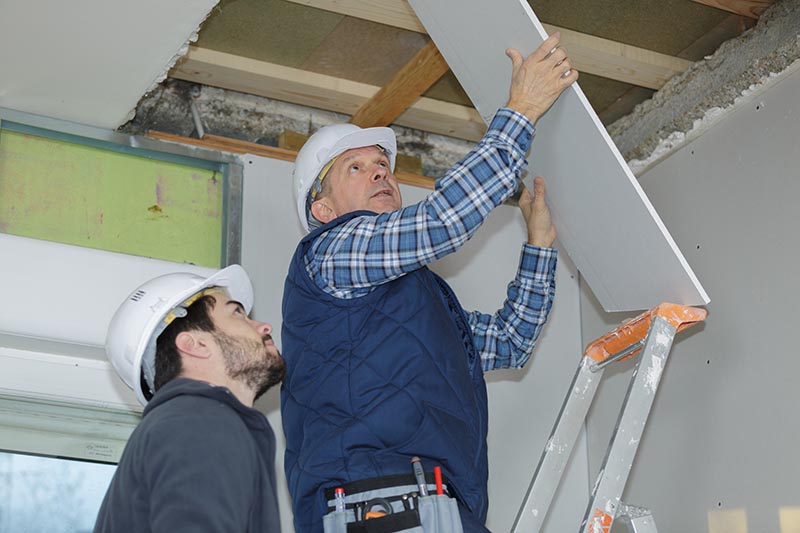Drywall vs. Plywood: What’s the Difference?
-
Ed Malaker
- Last updated:

Drywall and plywood are two of the most common building materials, and if you like to do many DIY projects, you have likely worked with both. However, many people are unsure about their differences and don’t know when to choose plywood or drywall for a project. If this sounds like your situation, keep reading as we provide a detailed description of each material. We also go over the pros, cons, and uses of each to help you be better informed.

Overview of Drywall

What Is It?
Drywall is calcium sulfate dihydrate, which many people call gypsum. It is a kind of plaster that they extrude between thick sheets of paper that become the front and back of the drywall. Once the plaster hardens, they cut it into square panels that we nail onto support beams to form the walls in our homes. Manufacturers can also add ingredients that make it more resistant to fire, moisture, and mold growth.
What It’s Good For
Drywall is easy to cut, and you can create walls around complex objects without special tools, so it makes up the basis of most walls in homes across the United States. It has a smooth professional-looking surface and no sharp edges. However, it’s not that strong, so you cannot use it for hanging shelves or other heavy objects. To hang an object in a room with drywall, you will need to hammer the nails into the same support beams that hold up the drywall. Another downside to drywall compared to plywood is that it is much heavier and can be harder to hang.
- Easy to cut
- Professional appearance
- No sharp edges
- Not strong
- Heavy
Overview of Plywood

What Is It?
Plywood is several thin pieces of wood glued together. Manufacturers alternate the grain of each piece at a 90-degree angle, which helps strengthen sheets so they are many times stronger than a natural board of the same size. Plywood is also much stronger than drywall. A single sheet of drywall can be only a few layers thick or as many as 21 layers.
What It’s Good For
Plywood is a good alternative to drywall. Since it is so strong, you can hang shelves and other objects directly on it. It has many other uses, including cabinet building, shed building, flooring, roofing, and birdhouses. The downside to plywood is that it usually has a rough surface, so it is not many people’s first choice for an indoor wall. It can also be susceptible to moisture damage, and cutting it is difficult, often resulting in jagged and sharp edges.
- Strong
- Variety of uses
- Susceptible to moisture damage
- Rough surface
- Hard to cut

When to Use
Drywall
People use drywall to create most of the walls in their homes. It is perfect for almost any room except the bathroom or the kitchen.
Plywood
Plywood can help you create extremely sturdy interior walls, and higher-end boards can even have a smooth, professional-looking surface. However, most people use it for the walls in storage sheds and similar structures. Many people also use it to create cabinet doors and construct furniture, and you will even find uses for it in flooring and roofing. Another good use for plywood is creating walls between two rooms where more strength is required.

Which Material Should I Use?
If you are looking to build a wall in your home, your best bet will most likely be drywall. It’s easy to cut into shape and easy to repair if it gets damaged. It has a smooth surface that you can paint, and it’s less expensive than plywood and much more fire resistant. Choose plywood for building walls in a storage shed, where the added strength will help it hold up against the elements. It’s also a good choice for kitchen islands, cabinets, and shelving.
- Interior walls
- Living room
- Bedroom
- Hallway
- Interior walls
- Shed walls
- Cabinets and shelves
- Flooring and roofing

Conclusion
While plywood is extremely durable, most people use drywall for interior walls because it is less expensive, looks better, and is easy to cut and shape. Drywall is also resistant to fire and can contain additives that make it resistant to moisture and mold. It’s not durable enough to hang shelving, but that’s easy to get around by hammering the hanging nails into the studs. If you need to create an exterior wall or a wall between two rooms, plywood is the better choice. It’s sturdier than drywall, and you can attach doorknobs, hinges, and shelves directly to it.
Featured Image Credit: Potashev Aleksandr, Shutterstock
Contents
